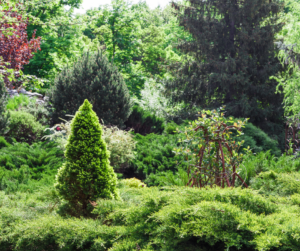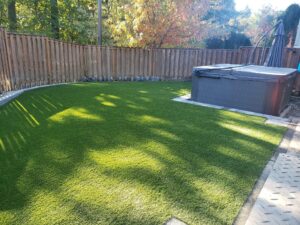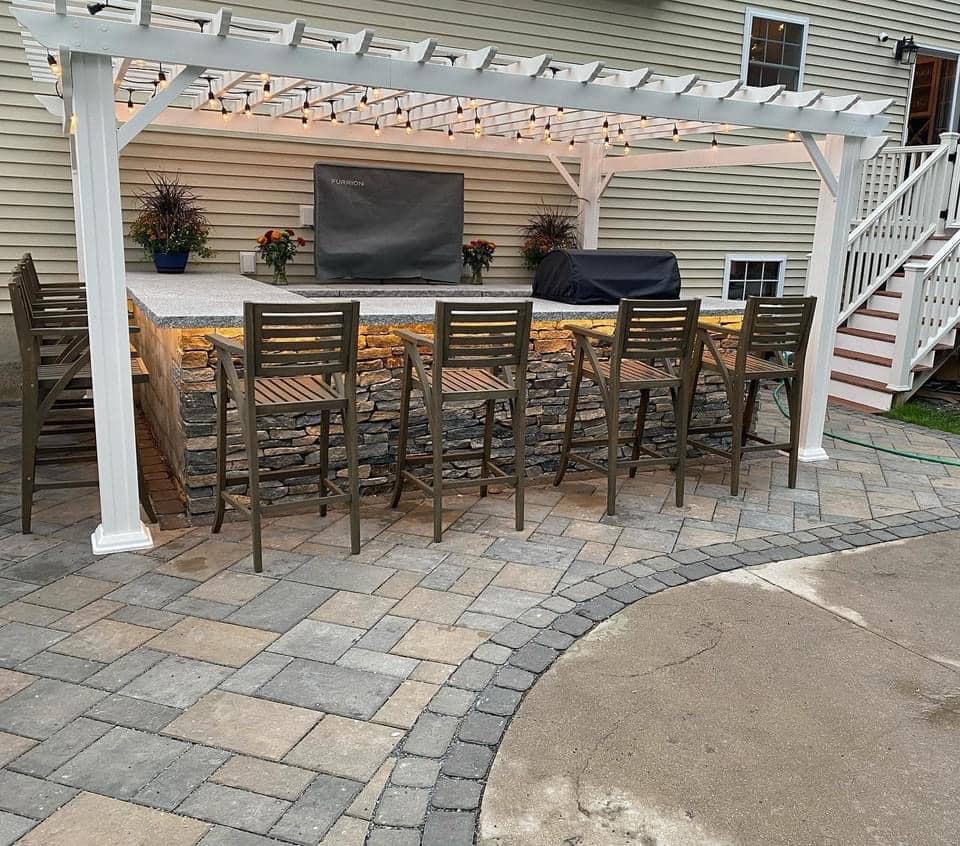Seeking a Landscape Designer? Here’s a Quick Guide:
- Association of Professional Landscape Designers (APLD) and American Society of Landscape Architects (ASLA): Use their search tools to find qualified professionals.
- AD PRO Directory: An open-access list for finding landscape specialists by location.
- Consultation Preparation: Prepare questions about design approaches, style, and project management.
- Budget Considerations: Discuss upfront about fee structures and project investments.
- Timeline: Understand the potential timeline, from weeks for smaller projects to over a year for larger renovations.
Landscape design is more than just making your outdoor space look nice. It’s about creating a balance between aesthetics and functionality, shaping an environment that complements your lifestyle while adding value and beauty to your property. Whether we’re talking about a simple garden revamp or an extensive outdoor living area makeover, the expertise of a professional landscape designer can transform your vision into reality.
For homeowners or business owners in Massachusetts looking to enhance their outdoor spaces, finding the right landscape designer involves more than just hiring a professional. It’s about partnering with someone who understands your needs, shares your vision, and holds the technical skills to make it happen seamlessly. This initial steps—such as using search tools from APLD, ASLA, or the AD PRO Directory, and preparing for your initial consultation—are crucial. They ensure that the professional you choose aligns with your expectations in creating both aesthetically pleasing and functional outdoor spaces.
As you embark on this journey to bring your outdoor space to life, the beauty of landscape design lies not just in the end result but in crafting spaces that resonate with how you live, entertain, and find peace.

What Does a Landscape Designer Do?
When you’re thinking about transforming your outdoor space, a landscape designer is your go-to expert. But what exactly do they do? Let’s break it down into simple terms.
Public Parks
Imagine a place where kids laugh on playgrounds, families picnic under shady trees, and joggers wind through scenic paths. A landscape designer plans these spaces to be both beautiful and functional, making sure everyone enjoys their time outdoors.
Residential Areas
Your home’s outdoor space should be your sanctuary. Landscape designers work magic here, creating cozy patios, vibrant flower beds, and lush lawns that make your home stand out and become a place of relaxation and joy.
Gardens
Whether it’s a vegetable garden, a rose garden, or a drought-tolerant landscape, designers plan these spaces to align with your vision and the ecosystem. They know which plants will thrive and how to arrange them for the best aesthetic and functional outcome.
Playgrounds
Designing spaces for play isn’t just about fun. Safety, accessibility, and environmental impact play huge roles too. Landscape designers ensure these areas are safe havens for creativity and activity, blending them seamlessly into their surroundings.
Site Assessment
Before any shovel hits the ground, a landscape designer evaluates your space. They look at soil health, sunlight patterns, drainage, and existing vegetation. This step is crucial for ensuring that the final design is both beautiful and sustainable.
CADD Programs
Computer-Aided Design and Drafting (CADD) programs are tools that landscape designers use to create precise and detailed plans. These programs help in visualizing the project and making adjustments before the physical work begins, ensuring accuracy and client satisfaction.
Cost Estimates
Budgeting is key in landscape projects. Designers provide detailed cost estimates, helping you understand where your money goes. They can suggest materials and plants that offer the best value, ensuring your project stays within budget without compromising on quality.
In summary, a landscape designer’s role is multifaceted. They combine art, science, and technology to create outdoor spaces that are not only beautiful but also functional and sustainable. From the initial site assessment to the final cost estimate, they guide you through the process, making your dream landscape a reality. By understanding what these experts do, you’re better prepared to collaborate effectively, ensuring a successful project that enhances your outdoor living experience.
Moving on, let’s explore the differences between a landscape architect and a landscape designer, and how to choose the right professional for your project.
Landscape Architect vs. Landscape Designer
When you’re ready to transform your outdoor space, you might wonder whether you need a landscape architect or a landscape designer. While both professionals can help create beautiful and functional outdoor areas, there are key differences in their training, expertise, and the types of projects they typically handle. Let’s break it down:
Technical Knowledge
Landscape Architects have extensive technical training. They often work on larger, more complex projects that require a deep understanding of engineering principles, such as dealing with elevation changes, drainage systems, and constructing retaining walls. They’re equipped to tackle challenges that come with large-scale commercial or public projects.
Landscape Designers, while they may possess a solid foundation in horticulture and design principles, typically focus more on the aesthetic and functional aspects of residential garden design. They might not have the same level of technical training as landscape architects but can create beautiful, practical outdoor spaces that cater to homeowners’ needs.
License Requirement
A significant difference between the two is the license requirement. Landscape architects are required to have a license to practice in most states, which means they’ve completed a degree in landscape architecture, gained several years of experience under a licensed architect, and passed a rigorous exam.
Landscape designers, on the other hand, aren’t usually required to have a license. This doesn’t mean they lack expertise—many have degrees in related fields and years of experience. However, if your project involves significant structural work, a licensed landscape architect might be necessary.
Aesthetics
When it comes to aesthetics, both landscape architects and designers have an eye for creating beautiful spaces. Landscape designers often have a flair for garden design, plant selection, and creating cozy, inviting outdoor areas that feel like an extension of the home.
Landscape architects, while also concerned with aesthetics, tend to think on a larger scale. They’re skilled in creating cohesive designs that blend the built environment with the natural one, ensuring that larger outdoor spaces are both beautiful and functional.
Plant Selection
Plant selection is an area where landscape designers often shine. They typically have extensive knowledge about a wide variety of plants, including which types thrive in certain environments, how they contribute to the overall design aesthetic, and their maintenance needs.
Landscape architects also select plants for their projects but may focus more on how the plantings fit into the broader context of the design, such as how they’ll look year-round, their growth patterns over time, and how they contribute to the site’s sustainability.
In summary, the choice between hiring a landscape architect or a landscape designer depends on the scope and complexity of your project. For large-scale, technical projects, a landscape architect is essential. For residential garden design and projects that focus more on aesthetics and plant selection, a landscape designer is a perfect fit. Regardless of whom you choose, ensuring they understand your vision and can bring your dream outdoor space to life is key.
How to Choose the Right Landscape Designer
Finding the right landscape designer is like finding the perfect partner for a home makeover. You want someone who understands your vision, communicates well, and brings expertise to the table. Here’s how you can find that perfect match:
Google: Start with a simple search. Type in “landscape designer near me” and see what comes up. Look at their websites, portfolios, and reviews. This will give you a good first impression of what they offer and how satisfied their previous clients are.
Friends’ Recommendations: Nothing beats a personal recommendation. Ask friends, family, or neighbors who have had landscaping done whom they used and if they were happy with the outcome. This can lead you to a trusted professional who has already proven their worth.
APLD and ASLA: Both the Association of Professional Landscape Designers (APLD) and the American Society of Landscape Architects (ASLA) have search tools on their websites to help you find qualified professionals in your area. Members of these organizations are required to meet certain education and experience standards and adhere to a code of ethics, providing an extra layer of trust.
AD PRO Directory: For a curated list of landscape designers, check out the AD PRO Directory. This resource lists AD-approved professionals, making it easier to find someone whose work has been recognized for its excellence.
Preparing for the Initial Consultation
Once you have a shortlist, the initial consultation is your opportunity to see if they’re the right fit. Here’s how to prepare:
- List Your Goals: Know what you want from your outdoor space. Do you want a cozy place to relax, an area for entertaining, or a combination of both? Be clear about your objectives.
- Collect Inspiration: Gather images or create a Pinterest board of landscapes that inspire you. This will help the designer understand your style and preferences.
- Think About Maintenance: Be honest about how much time and money you want to invest in maintaining your landscape. This will affect the design choices your landscape designer makes.
- Prepare Questions: Refer to the list of questions provided earlier. Asking about their approach, communication style, and how they handle challenges will give you a good sense of their working style.
Choosing the right landscape designer is crucial for transforming your outdoor space into your dream landscape. Take your time, do your research, and prepare well for the initial consultation. With the right approach, you’ll find a landscape designer who can bring your vision to life while respecting your budget and maintenance preferences.

Top Considerations Before Hiring a Landscape Designer
Finding the right landscape designer is a big step towards creating your dream outdoor space. But, before you dive in, there are several key factors you need to consider to ensure you’re making the best choice for your project. Let’s break these down:
Budget
Money matters. Before anything else, know how much you’re willing to spend. Landscape design can range from a few hundred to thousands of dollars. Be upfront with potential designers about your budget. This helps them tailor their proposals to what you can afford, ensuring no surprises down the line.
Style Preference
Your style, your space. Do you dream of a modern minimalist garden or a wild, natural landscape? Your preference will guide which landscape designer is right for you. Look at their portfolios to see if their past projects align with your vision. If their style makes you excited, you’re on the right track.
Maintenance
Think long-term. How much time are you willing to spend on upkeep? Be honest about this with your landscape designer. They can create a beautiful space that matches your maintenance commitment, whether it’s low-maintenance native plants or a more demanding formal garden.
Sustainability
Eco-friendly is key. Consider environmental factors like local climate, water availability, and native plant species. A good landscape designer will prioritize sustainability, offering solutions like drought-tolerant plants or efficient irrigation systems to minimize your garden’s environmental impact.
Local Regulations
Rules rule. Every area has its regulations—setbacks, height restrictions, water usage rules. A knowledgeable landscape designer will be familiar with these and design within their confines, saving you from potential legal headaches.
Project Timeline
Patience is a virtue. Good things take time, and landscape projects are no exception. From design to completion, timelines can vary widely. Discuss your timeline expectations early on. Factors like weather, project complexity, and contractor schedules can all affect the timeline.
Communication Style
Stay in the loop. How do you prefer to communicate? Email, phone calls, in-person meetings? Make sure your landscape designer’s communication style matches yours. Regular updates and being responsive to your questions and concerns are signs of a professional who values your input and satisfaction.
Selecting a landscape designer is more than just hiring someone with the technical skills; it’s about finding a partner who understands your vision, respects your budget, communicates effectively, and is committed to creating a sustainable and beautiful outdoor space that you’ll love for years to come. Keep these considerations in mind as you move forward, and you’ll be well on your way to making your dream landscape a reality.
Maximizing Your Investment in Landscape Design
When you decide to invest in landscape design, you’re not just enhancing the look of your outdoor space; you’re also potentially increasing the value of your property and contributing positively to the environment. To ensure you get the most out of this investment, here are key areas to focus on:
Curb Appeal
First impressions matter. A well-designed landscape not only makes your home more inviting but can also significantly boost its curb appeal. This is especially valuable if you’re considering selling your property in the future. Simple additions like colorful flower beds, a neatly trimmed lawn, and a clear pathway can make a huge difference. The goal is to create a welcoming entrance that catches the eye and sets a positive tone for the rest of the property.
Environmental Considerations
A responsible landscape designer will take environmental considerations into account. This means choosing native plants that are adapted to your local climate and soil conditions. Native plants require less water and maintenance and provide essential habitats for local wildlife. By incorporating these into your design, you’re not only making a choice that’s good for the planet but also easier on your wallet in the long run.
Drought-Tolerant Planting
Water conservation is becoming increasingly important in many regions. Drought-tolerant planting, also known as xeriscaping, involves selecting plants that thrive with minimal water. This approach can significantly reduce your water usage and maintenance costs, all while ensuring your garden stays lush and vibrant, even in dryer climates.
Sustainable Irrigation
To further maximize water efficiency, consider integrating sustainable irrigation solutions into your landscape design. Drip irrigation systems, for example, deliver water directly to the base of the plant, minimizing waste. Smart irrigation controllers can adjust watering based on weather conditions, further optimizing water use. These systems not only conserve water but can also save you money on your water bill.
Fire Prevention
In fire-prone areas, incorporating fire-resistant plants and materials into your landscape design can be a life-saving decision. Opt for plants with high moisture content and choose hardscaping materials like stone or gravel that can act as a firebreak. Creating defensible space around your property can significantly reduce the risk of fire damage.
Future Maintenance
Finally, think about the future maintenance of your landscape. A beautiful design that requires high maintenance might not be the best choice if you’re not someone who enjoys gardening or if you have a busy lifestyle. Discuss low-maintenance options with your landscape designer. They can recommend designs and materials that look great with minimal upkeep, ensuring your outdoor space remains beautiful year after year without becoming a burden.
By focusing on these aspects, you can ensure your landscape design is not only beautiful and functional but also sustainable and resilient. This approach not only maximizes your investment in the short term by enhancing curb appeal and usability but also in the long term by reducing maintenance costs and contributing to the environmental well-being. Whether you’re looking to create a serene outdoor oasis or a vibrant space for entertaining, keeping these considerations in mind will help you achieve a landscape that you and future generations can enjoy.
As you move forward with your landscape design project, the choices you make today will impact not only the look and feel of your outdoor space but also its sustainability and functionality in the years to come.

Conclusion
Investing in professional landscape design is not just about beautifying your outdoor space—it’s about creating a functional, sustainable environment that enhances the quality of your life and increases the value of your property. A well-designed landscape can transform your outdoor area into a serene retreat, a vibrant place for gatherings, or a productive garden, all while contributing to the ecological health of your community.
JM Mento Landscape Design stands out in the field of landscape design for its commitment to delivering personalized, creative, and sustainable outdoor solutions. Whether you’re dreaming of a peaceful garden to unwind, a lively space for family fun, or a blend of aesthetics and utility, JM Mento Landscape Design is equipped to bring your vision to life.
Their process is thorough and client-focused, starting with an initial site meeting to understand your desires and needs, followed by a proposal that outlines the scope and budget. With JM Mento Landscape Design, you’re involved in every step of the journey, from the design presentation to the final walk-through, ensuring the final landscape exceeds your expectations.
Moreover, JM Mento Landscape Design prioritizes sustainability and maintenance planning, ensuring that your outdoor space is not only beautiful on completion but remains vibrant and healthy for years to come. By choosing JM Mento Landscape Design, you’re not just making an investment in your property; you’re investing in a sustainable future and a lifestyle that brings joy and tranquility into your daily life.
As we conclude, the value of a landscape design project extends beyond the immediate aesthetic appeal. It’s about creating a space that resonates with your lifestyle, meets your functional needs, and contributes positively to the environment. With JM Mento Landscape Design, your dream outdoor space is within reach, ready to be transformed into your personal oasis.
Ready to embark on this transformative journey? Visit JM Mento Landscape Design today and take the first step towards realizing the potential of your outdoor space. Your dream landscape awaits, and together, we can make it a reality.
Frequently Asked Questions about Hiring a Landscape Designer
When considering hiring a landscape designer, several common questions come to mind. It’s crucial to have a clear understanding of these aspects to ensure you’re making informed decisions regarding your project. Let’s explore some of the most frequently asked questions.
What is the highest salary for a landscape designer?
The salary for a landscape designer can vary widely based on experience, location, and the size of the projects they work on. According to data, experienced landscape designers in high-demand areas can command higher salaries, with top earners potentially reaching six-figure incomes. However, it’s important to note that passion for the craft and dedication to creating beautiful, functional outdoor spaces are often the main drivers for individuals in this profession, beyond just the potential earnings.
How can I find a landscape designer or landscape architect?
Finding the right landscape designer or landscape architect for your project involves a few steps. Firstly, consider utilizing online directories and professional organizations such as the APLD (Association of Professional Landscape Designers) and ASLA (American Society of Landscape Architects), which connect you with certified professionals in your area. Additionally, word-of-mouth recommendations from friends or family who’ve had landscape work done can be incredibly valuable. Websites like JM Mento Landscape Design also offer a direct way to explore services and previous projects to help you make an informed choice.
How can I prepare for the initial consultation with a landscape designer?
Preparing for your initial consultation is an essential step in the process. Here are a few tips to ensure you get the most out of this meeting:
- Gather Inspiration: Collect images or notes about designs you love or specific elements you want to include in your landscape. This helps the designer understand your style and preferences.
- Consider Your Needs: Think about how you use your outdoor space or how you’d like to use it. Whether it’s for entertaining, gardening, or relaxation, communicating your lifestyle needs will guide the design process.
- Set a Budget: Having a clear budget in mind allows the designer to tailor their recommendations to what’s financially feasible for you.
- List Questions: Write down any questions you have about the design process, timeline, maintenance, or anything else you’re curious about. This ensures you won’t forget to ask during the consultation.
The initial consultation is a golden opportunity to see if a landscape designer’s approach aligns with your vision and expectations. It’s about finding a professional who listens to your needs, offers creative solutions, and clearly communicates how they can transform your outdoor space into your personal haven.
Embarking on a landscape design project is an exciting journey that promises to enhance not just the beauty and functionality of your outdoor space but also your overall quality of life. With the right preparation and the support of a skilled landscape designer, your dream outdoor space is within reach. Ready to start this transformative journey? Contact JM Mento Landscape Design today and take the first step towards realizing the potential of your outdoor space. Together, we can bring your vision to life.






0 Comments